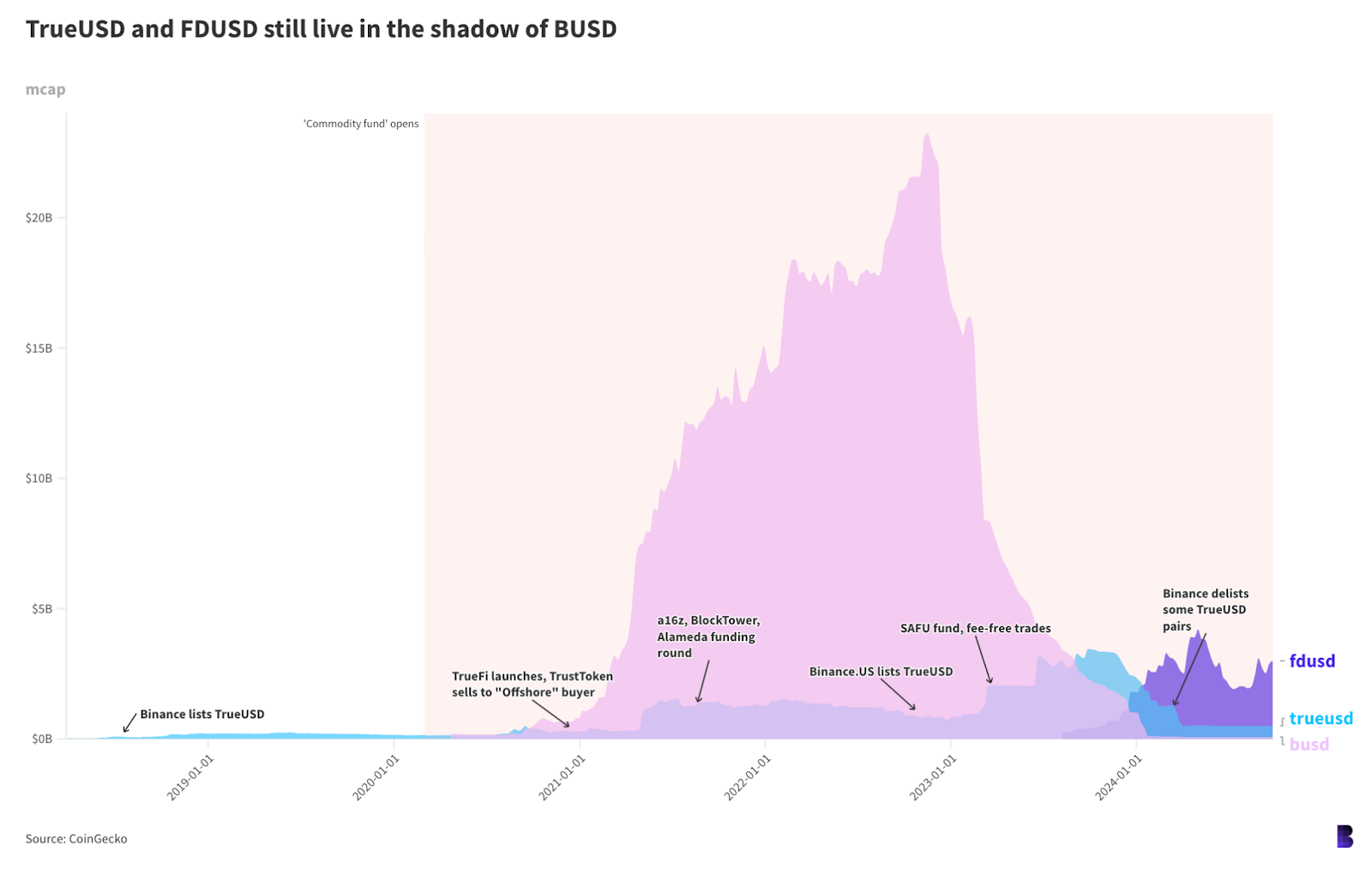There’s nearly half a billion dollars in TrueUSD circulating through the crypto ecosystem right now. And if what the Securities and Exchange Commission alleges is true, practically none of it is properly backed.
That includes pairs on Binance, Bybit, Gate.io and Bitget, along with dozens of other exchanges.
We learned a lot about the alleged inner workings of TrueUSD overnight. It apparently speed-ran the gauntlet of everything you shouldn’t do when managing a stablecoin.
Phony attestation reports. Opaque ownership structures. Secretly investing the assets backing the token in risky, illiquid assets.
All of this is “alleged” because we’re again left with an ambiguous SEC settlement that neither confirmed nor denied the charges. Very helpful, much investor protection.
Read more: TrustToken, TrueCoin settle with SEC over TUSD allegations
Regardless, what’s entirely frustrating is that going by the timeline laid out in the SEC’s complaint, the showrunners behind TrueUSD had (allegedly) been fooling around with customer deposits behind their backs at every one of the coin’s major milestones.
What the SEC calls the “commodity fund” — which (allegedly) took dollars that had been sent to TrueUSD bank accounts in return for TUSD — starting in March 2020 (allegedly) invested in “trade finance, structured trade, export finance, import finance, supply chain financing and project financing of entities.”
At the same time, the team (allegedly) claimed over and over that every TUSD was backed 1-to-1 with US dollars, or at other times, cash and cash equivalents.

In (alleged) reality, the “commodity fund” was ramping up its allocations (read: siphoning of user funds), to the point that 99% of the assets backing TUSD as of this month were really sitting in the illiquid commodity fund. The period of time in which the fund has been (allegedly) active is shown on the chart above by the red shaded area.
In August 2021, a16z, BlockTower and the ill-fated Alameda Research together invested $12.5 million in the firm’s governance token, TRU, about 18 months after the commodity fund (allegedly) started misappropriating user funds.
Binance.US listed TrueUSD just over a year after that. Four months later, the flagship global Binance exchange replaced its beleaguered branded stablecoin BUSD with TUSD and USDT in its “SAFU” fund, which was meant to safeguard user assets against losses.
Read more: TUSD stability questioned as value dips below one dollar
Shortly after that, in March 2023, Binance made it so TUSD was the only stablecoin with fee-free trading — leading to another $1.5 billion in TUSD mints over the next few months. If what the SEC says is true, at no point were all those tokens fully backed, or easily redeemable.
Of course, legitimate stablecoin issuers also invest the cash meant to back their tokens in external vehicles, although it’s usually in short-dated US Treasurys, which are super liquid and considered cash equivalents. That’s the stablecoin business model, as popularized by Tether, Paxos, Circle and even MakerDAO, now Sky.
Parts of the crypto space, including traders and media outlets, were apparently right to be skeptical of TrueUSD. The (alleged) secret misappropriation of user funds was avoidable and unnecessary, even if (allegedly) ongoing.
It’s also true that the bad actors of the 2018 and 2021 market cycles are mostly dealt with, or will be sometime soon.
What’s uncomfortable is that instances of totally overt fraud could become increasingly rare over the coming years. Massive prison sentences and international manhunts are generally great deterrents.
Major cases like FTX, Alameda, Three Arrows, Terra and Celsius make for easy scapegoats after the fact. Same with the basic investment fraudsters that regularly get pinged by the SEC for their crypto-related crimes.
It’s the low hanging fruit that’s been tidied up. But crypto has agency. Radical transparency — both on and off-chain — can make a lasting impact on what the industry looks like moving forward, as long as we can drop the gimmicky attestations and other similarly flimsy proofs.
For all the SEC’s faults, it took a US regulatory agency to come in and show just how (allegedly) bad things were behind the scenes.
My prescription: The bigger, more popular and widespread the project, the more scrutiny must be applied. Continuously so. Demand it. Or else crypto will, ironically, be forever stuck waiting for the SEC to clean up these kinds of messes in its stead.
A modified version of this article first appeared in the daily Empire newsletter. Subscribe here so you don’t miss tomorrow’s edition.
 blockworks.co
blockworks.co